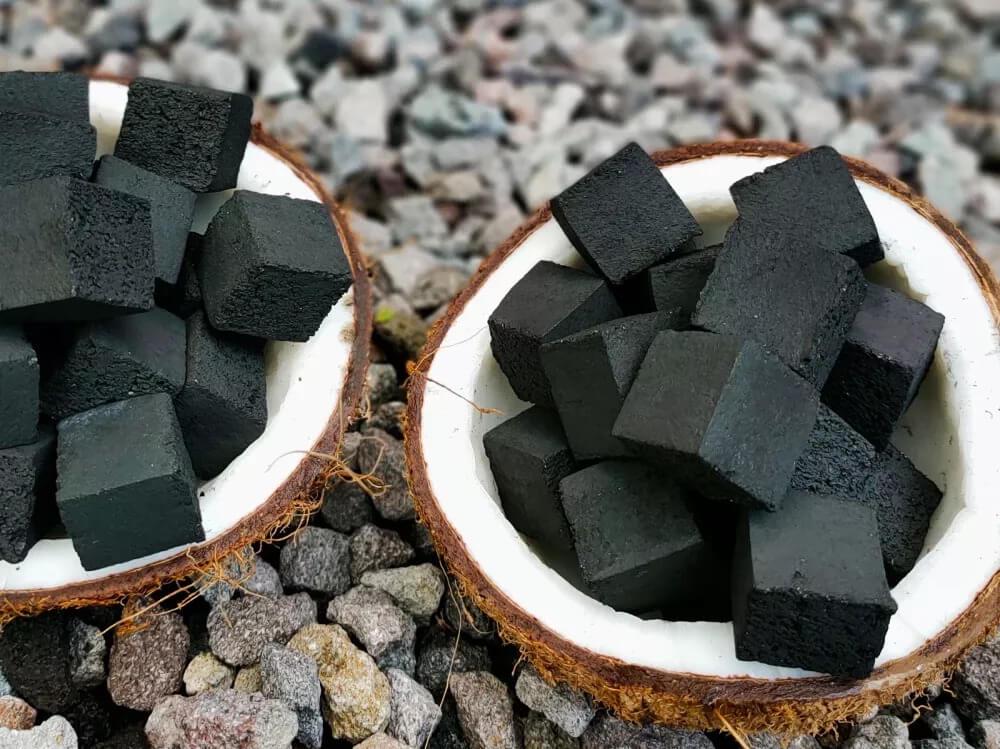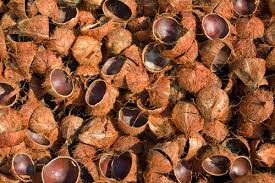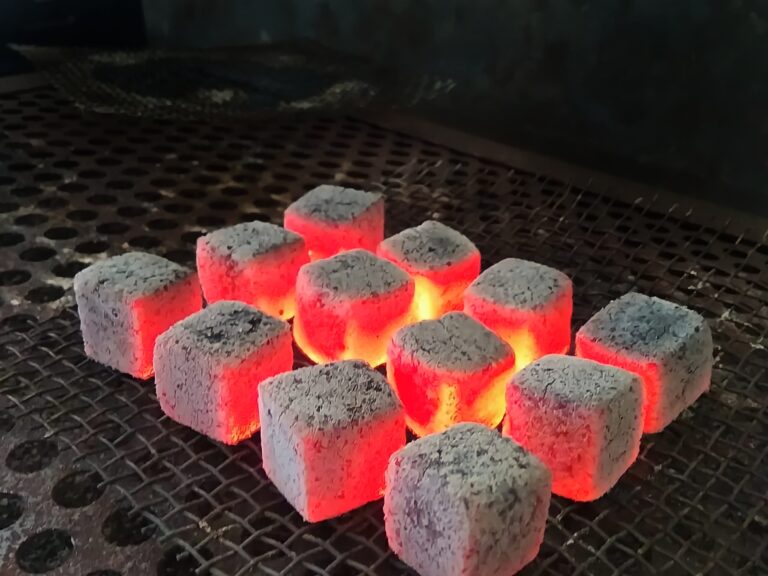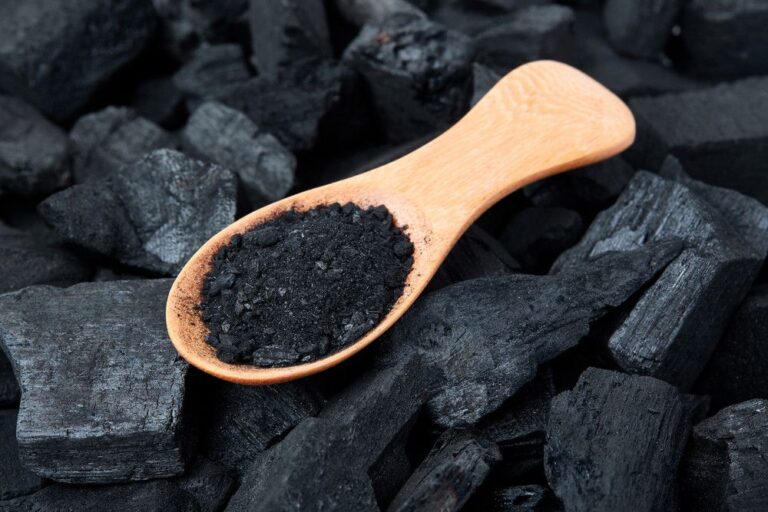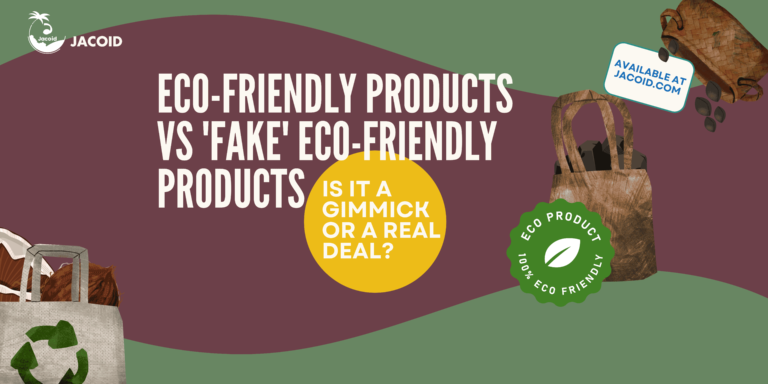From Coconut Shells to Premium Briquettes
With increasing awareness of the importance of the environment, companies that offer sustainable solutions are gaining attention. One prominent innovation is charcoal briquettes made from coconut shells. Coconut charcoal briquettes not only offer superior performance as a fuel, but also address environmental challenges by utilizing waste from the coconut industry. Thus, this product has the potential to become a top choice for consumers who care about the environment.
Manufacturing Process of Coconut Charcoal Briquettes
Coconut charcoal briquettes are produced from coconut shells, which are often regarded as waste and underutilized. However, this leftover material has great potential to be processed into a valuable and environmentally friendly energy source. Here are the steps in producing these briquettes, with an emphasis on sustainability aspects that can be an important part of product branding.
1.Coconut Shell Collection and Preparation
The process of making coconut shell charcoal briquettes begins with collecting coconut shells, which are often obtained from coconut processing factories. In this way, this waste material can be reused instead of being discarded. Emphasizing environmentally friendly procurement methods is crucial for brand strategy, as it reflects principles of sustainability and waste reduction. After being collected, the coconut shells are cleaned to remove foreign particles that affect the quality of the final product. This cleaning process includes drying the shells under the sun or using a dryer to reduce moisture content. This clean and efficient approach can highlight the brand’s commitment to quality and concern for the environment.
2. Coconut Shell Carbonization
Once the cleaning and drying are completed, the coconut shells proceed to the carbonization phase. During this stage, the shells are heated in a low-oxygen furnace, which converts them into charcoal by removing volatile substances and leaving behind pure carbon. This step can play a key role in branding, emphasizing the use of efficient, traditional techniques to create a natural product.
3.Crushing and Grinding
The charcoal produced from the carbonization process is further crushed and ground to fine particles. This stage is crucial to ensure consistency of the final product, which in turn results in high quality briquettes. In the context of branding, this process can be used to emphasize the superior quality of the product compared to other biomass briquettes available in the market.
4. Mixing and Forming Briquettes
Next, the charcoal powder is mixed with natural binders, such as starch or molasses, until it reaches a dough-like consistency. This mixture is then fed into a briquetting machine that compacts it into a uniform shape, usually a cube or hexagonal. After going through the formation process, the briquettes are then dried and hardened before proceeding to the packaging stage. The emphasis on using natural and non-toxic binders in this process is an important element for environmentally friendly branding.
5. Packaging and Distribution
Once the briquettes are formed and dried, they are ready for packaging and distribution. Using environmentally friendly packaging can reinforce the brand’s sustainability message. Utilizing biodegradable or recyclable materials, as well as clearly labeling the product’s environmental benefits, are effective branding strategies.
Innovative Branding Strategy for Coconut Charcoal Briquettes in the Global Market
The success of coconut charcoal briquettes is not only determined by the manufacturing process, but also by effective marketing and branding strategies. Promoting sustainability, building a strong brand identity, and utilizing social media can attract consumers’ attention. In addition, providing education on the benefits of the product and working with influencers will help expand market reach. Building good customer relationships and implementing data-driven strategies are also crucial to creating brand loyalty. By integrating all these elements, you can develop a strong and competitive coconut charcoal briquette brand in the market.
1. Highlight Sustainability and Eco-Friendliness
In an increasingly environmentally conscious era, coconut charcoal briquettes are a top choice thanks to their eco-friendly properties. Made from coconut shell waste, these briquettes are a renewable resource that can reduce waste.In addition, coconut charcoal briquettes produce less smoke and ash compared to traditional wood charcoal, making briquettes a cleaner fuel choice. The brand message should clearly highlight these benefits.Highlight how using coconut shell helps reduce deforestation and lower carbon emissions. Thus, this product is not only an energy source, but also a solution for sustainable energy that supports efforts to preserve the planet.
2. Communicate Quality and Performance
Another important aspect of branding is the quality and performance of the briquettes. Coconut charcoal briquettes burn hotter and longer than traditional charcoal, making them an ideal choice for a variety of purposes, from grilling to industrial applications. Emphasizing this advantage in a branding strategy can attract consumers looking for high-quality fuel.Slogans such as “Burns Longer, Cleaner Air” can effectively convey two key benefits: high performance and environmental friendliness. Quality certifications, such as ISO standards or organic certification, can also increase consumer confidence in the brand.
3. Focus on Ethical Aspects and Fair Trade
Today, many consumers are concerned about the ethical practices of companies. Coconut charcoal briquettes are often produced in developing regions rich in coconuts. A branding strategy that highlights fair trade practices, including the payment of fair wages and support for local communities, will appeal to socially conscious consumers.Including stories about the smallholders and workers involved in production can give the brand a human touch. This helps build an emotional connection with the audience and differentiates your products from competitors.
4. Utilize Digital Marketing and E-commerce
Enhancing Brand Visibility in the Digital Era The Importance of Being Online. Building a professional website to showcase the benefits and quality of coconut charcoal briquette products is a crucial step. Include engaging content such as articles about the product’s benefits, customer testimonials, and videos showing the production process.Social media also plays a big role in modern branding. Sharing content that highlights the brand’s eco-friendly ethos, accompanied by appealing visuals, can attract the attention of more followers. Collaborating with environmental influencers or activists can increase brand visibility and credibility.E-commerce platforms, both local and international, are important distribution channels. Teaming up with platforms such as Amazon, Alibaba, or green product marketplaces can increase sales and market reach.
5. Develop Attractive Packaging and Labels
Creating Impactful Packaging for Coconut Charcoal Briquettes that Aligns with Environmental Values,Labels can highlight important features such as “Made from 100% Coconut Shell,” “Low Smoke,” or “Eco-Friendly Fuel.”Well-designed packaging not only protects the product, but also serves as an effective marketing tool. Clear and concise labels that focus on sustainability, performance, and ethical sourcing will appeal to environmentally conscious consumers.
6. Build a Compelling Brand Story
Finally, a compelling brand story can set coconut charcoal briquettes apart from the competition. This story can highlight how the product utilizes waste (coconut shells) and turns it into a useful energy source. Additionally, highlight the positive impact on the local community where the product is produced.Spreading this narrative through various channels, whether on packaging, website or social media, can help build an emotional connection with customers. Consumers are more likely to support brands that align with their values and offer meaningful stories.

